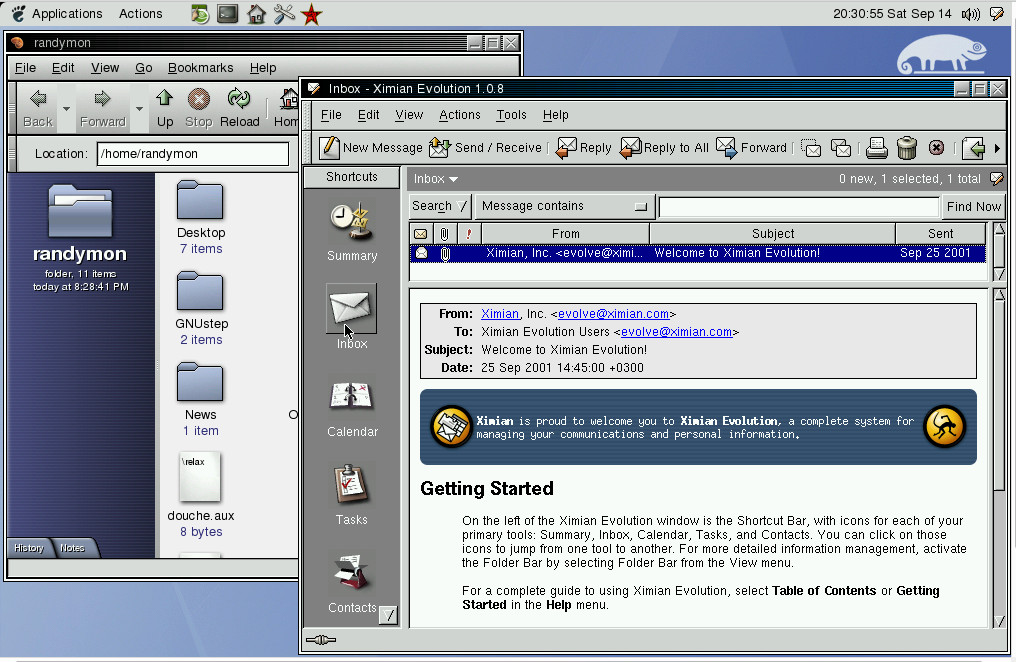Linux in 2001: as good as it ever got

SuSE Linux 8.1
So, in a bout of nostalgia, I laid hands on an old DVD containing SuSE Linux 8.1 pro and installed it in a VM, and have been using it all week. I last installed this OS in about 2001 on a Compaq Presario with 128MB of RAM and a 20GB hard drive.
It's unusable in a couple of ways: websites are mostly https these days, and this OS doesn't have the certificates or the cyphers to make the modern WWW work. But other than that, it's a pretty great experience. Thinking back on the last 17 years of Linux, I'm thinking this is as good as it ever got:
That's it for now. Posting from the VM, just for fun (check out the
headers!). My conclusion is: we have progressed in some ways, and in
others we haven't moved an inch. In a few others we've even gone
backwards. (Windows on the other hand, has gotten more user-hostile with
each release, so that's something). Hello from the past!

Red Hat Linux 8
Having a 2001 Linux OS installed, and living here near Raleigh, NC (the home of Red Hat and the birthplace of Usenet), I got to thinking about Red Hat Linux in the pre-Fedora days and well before its acquisition by IBM. I dug around on Ebay looking for old install DVDs and had no luck.
But thanks to In addition to Evolution, it had a very nice, older version of
Mozilla (1.0.1) that still relied on XUL for its interface, still had
native gopher support, and was generally clean and sharp. The Blue
Curve theme - which was so controversial - is professional and
appealling. Evolution looks great. There are some jaggy fonts (in
Mozilla, for example) yet somehow it doesn't seem to matter. RH 8 also
installed a decent selection of FTP clients, IRC clients, and emacs
21.2.1. It's got OpenOffice 1.0.1, which finally had decent fonts and
a tight, clean interface (I think I prefer the more muted icons than
LibreOffice's more colorful look these days - somehow looks more
professional in my opinion).
It was, overall, a great time for software. I installed both distros in VMs; I think
I'll hang onto them for a while - they're nice to use.
I'm remembering one other "nice" thing about that time - being stuck
on 56kbs dial-up internet, which I detested and which was awful. But
having a rotating IP address seems advantageous in these days of
tracking. And I had healthier habits then - get online, get some
stuff done, disconnect. These days it's "bored" - pick up
laptop, doodle around endlessly, look up and the sun has set.
(Definitely wouldn't go back to dial-up though; just need some
discipline).
A perfectly usable desktop experience. Long live Linux in 2001!
Postscript: modern hardware, on the other hand, I'd be hardpressed to give up. In 2001 I was sporting a 550 Mhz Pentium III (Coppermine) with 128MB RAM. I was able to accomplish everything I needed. But my 8MB RAM laptop with SSD disk these days is a marvel. Such a shame we squander all that extra hardware capacity these days with OSes that deliver no better value. Shame on the whole industry, and on the invisible hand of the market, which has led us on a path toward imbecility.

Trackbacks
The author does not allow comments to this entry

Comments
Display comments as Linear | Threaded